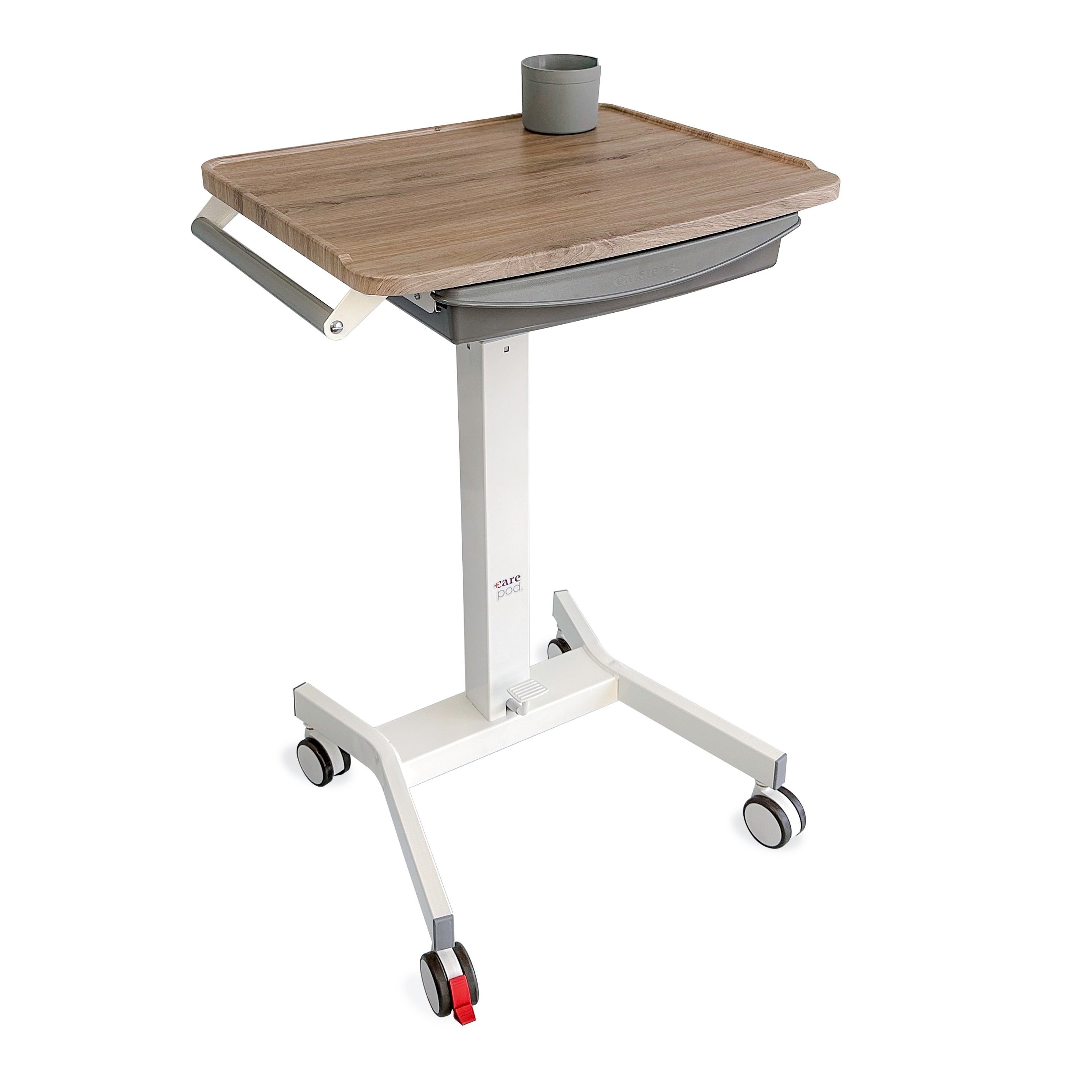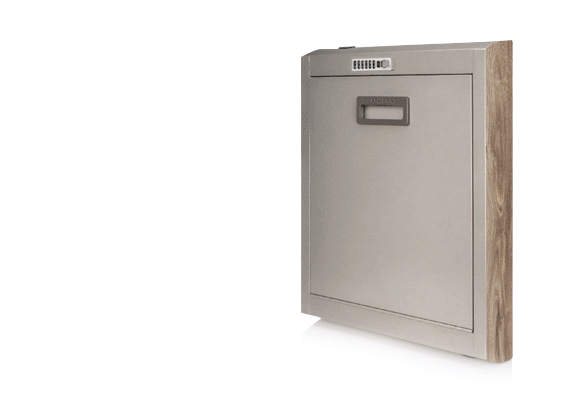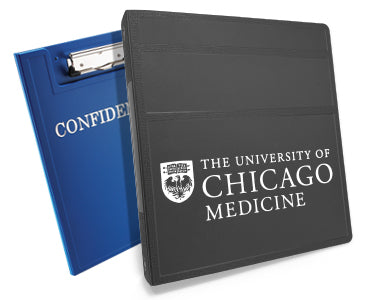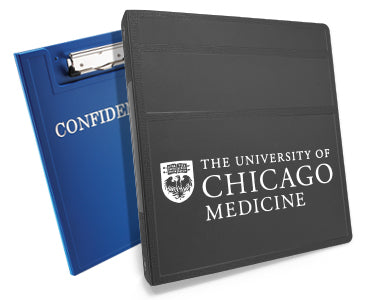Accurate medical records are vital to the continuity of patient care. They’ve existed in one form or another for as long as humans have been practicing medicine. But before the digital transformation put access to networked computers in every facility, paper charting was standard practice.
The first incarnation of electronic medical records dates as far back as 1960, with more common use popping up in the late 1980s and early 1990s. But it would be two more decades before they fully replaced paper charting as standard practice in facilities of all sizes. Today, most facilities rely first on EHR. But technology has its limitations, so you’ll still find paper charting as a common backup. Let’s talk pros and cons.
Related: Improving Your Charting: 2022 Guide
First, the Upside to Electronic Medical Records
The reason that the medical community has been eager to adopt Electronic Medical Records (EHRs) is that digital records are superior for recordkeeping and retrieval.
- Standardized Data: Electronic records allow facilities to control what type of data is recorded and how. From specifying what fields are available to determine how data can be entered into those fields, they have more control over the standardization of charting, which makes it easier to know what to expect when reading charts.
- Accuracy: Electronic records help combat the element of human error. Illegible handwriting, transcription errors, and other common mistakes are avoided using digital controls. These systems are also commonly used in conjunction with barcode scanning or automated alerts that notify nursing staff of potential problems before a mistake occurs.
- Accessibility: Digital healthcare records can be accessed and shared anywhere, anytime. This means that doctors at different facilities can have the necessary access to relevant patient information when it’s needed. Nobody has to rely on paper records or a staff member to retrieve a file—anyone with secure access to retrieve the patient files they need.
- Real-Time Data: Electronic health records can integrate with many different types of technology. In some cases, this means feeding data from a monitoring device directly into the EHR without waiting for a nurse to complete the data entry. What this means for patients and doctors is that data is available in real-time, allowing for greater efficiency in care and better clinical decision-making.
- Enhanced Patient Privacy: Healthcare data security is an important topic right now. And breaches have occurred, resulting in increased measures by healthcare facilities. But EHR’s provide better security through restricted access. Healthcare providers need credentials to access digital medical records, and there is always an audit trail of who accessed what and when.
With all the benefits ranging from better time efficiency to enhanced patient privacy, it’s easy to see why healthcare facilities have embraced electronic medical records. But still, there are a few drawbacks.
Related: Best Ways to Streamline Nursing Workflows
At Carsten’s, we believe in supporting healthcare workers with the right tools and equipment to promote quality care. Our family-owned business has more than 130-years of history as a top supplier for hospitals, clinics, surgery center’s, and more. Shop our products.

The Downside to Electronic Medical Records
Electronic medical records are so commonplace in today’s healthcare industry that it’s difficult to imagine a time when they were not in use. But seasoned nurses and doctors probably remember the days of paper charting. And while EHR’s are better for many reasons, they are far from perfect.
- Cost-Prohibitive: Digital technology is expensive, and small or rural healthcare clinics working on shoestring budgets still struggle to afford these systems. It’s not just the cost of the software. Digital recordkeeping means enhanced data security, adding IT staff to manage the software and security, and training staff on using the software.
- Technology Failures: Technology is wonderful until the power goes out, the internet goes down, or worseーyou get hacked. Even routine software maintenance can muddle your day. When this happens, big problems can come up, like not knowing what medications to dispense or not being able to check patient charts for allergies. Clear guidelines with backup paper charting are still essential for all facilities despite the innovations in technology.
- Inflexibility: Along with standardization comes rigid inflexibility. Providers may feel frustrated when treating atypical cases or prescribing infrequently used medications. These digital systems are designed for norms and offer few opportunities to work outside of the system. From an accuracy and standardization point of view, that’s a huge plus. But from tailored point-of-care services, it’s definitely a fail.
- Working Differently Doesn’t Mean Working Less: EHRs are often promoted as time-saving, efficient tools. And in the big picture, they areーallowing many facilities to reduce administrative staff. But doctors and nurses are still buried in work. How they work might look different with an EHR, but they are still busy reviewing test results and consulting with patients. If anything, they might be busier as facilities feel that the new technology gives them the green light to increase patient loads.
- Not a Fix-All for Bad Data: Never underestimate the creativity of clinical staff who are crunched for time. Documentation shortcuts or inputting data outside of expected parameters negates the benefits of standardizing data in an EHR. Avoid settings that default to ‘normal’ and then require a provider to update selections. Use formatting controls whenever possible. And enforce strict charting practices with your staff.
Related: Benefits of Having a Well-Designed Workstation Mount
The Reality of Medical Recordkeeping Today
Maintaining medical records is essential for receiving the most accurate and effective treatment. Unfortunately, many patients today don’t have reliable medical records on hand.
A 2017 study revealed the plethora of methods Americans use to keep track of their medical history. Split across different demographics, the vast majority prefer to rely on their provider to keep track of their information. Another percentage preferred to keep paper documents at home with a physical storage option and some Americans still have no method of keeping track of their medical records.
Electronic health records have evolved over the decades to ensure vital medical information isn’t lost in the shuffle. Does that mean electronic records are foolproof? Not quite. Alongside better access to medical software, the medical system also needs improved education on healthcare advocacy.
How Worker Shortages Affect Medical Recordkeeping
The United States is facing a healthcare worker shortage. Recent studies have shown at least 20% of healthcare workers quit their job during the pandemic, with another percentage considering a new field.
Electronic medical records provide the ability to segue new hires more smoothly. This doesn’t make paper records completely obsolete, however. The constant stream of new medical software means healthcare employees are constantly having to learn new programs, systems, and best practices.
Whether or not electronic health records will be viable for your establishment will depend on factors such as employee turnover, patient needs, and your budget.
Related: Importance Of Ergonomics In Mobile Workstations

The Growth of the Patient Portal
Patient portals have become a new standard in American healthcare. With just the click of a mouse, patients today are able to access their medical information from the comfort of their home.
Since the start of the pandemic, the patient portal doubles as a social distancing measure. Patient portals are useful for doing the following actions:
- Checking prescription status, which is then recorded into EMR
- Setting appointments
- Asking questions about past or upcoming appointments
- Improved workflow capabilities for the doctor or nurse
- Streamlined administration, such as filing, updating, or follow-up
The downsides to the patient portal involve security attempts, a lack of education on digital literacy, and outdated software.
The Increase in Medical Data Hacking Attempts
We’ve already touched on the issues with electronic health records and data breaches. The importance of this issue can’t be stressed enough, since just one hack can compromise millions of patients’ data.
Medical data hacking attempts are generally another form of identity theft, though these actions are sometimes done to steal money or compromise the building. Human error is a big enough issue as it is without adding security failures or outdated software to the mix.
An increasing issue facing medical providers is the selling of confidential patient information. Not only is this a legal issue, compromising medical information puts patients in a worse position down the road. Electronic health records are incredibly convenient and, thanks to regular hardware and software updates, are more secure than ever.
Related: How To Reduce Medical Supply Waste
We believe the best medical care needs the best medical equipment. We provide American-made toolkits, binders, and accessories for your workers.
The Internet of Medical Things
This term is an expansion on the Internet of Things, referring to both the medical devices and general applications connected to healthcare systems.
Electronic medical records are able to be updated more regularly thanks to this widespread connection. A few examples of the IoMT include (but aren’t limited to):
- Robotic surgery
- Heart rate monitoring
- Glucose monitoring
- Remote patient monitoring
- Ingestible sensors
Keeping medical devices connected electronically ensures strong cross compatibility across different departments. Sadly, just one power outage is enough to compromise all connected devices.
The Function of the Cloud in Medical Healthcare
The cloud is frequently cited as the way of the future. Why wouldn’t it? The cloud makes it easier for everyone to work remotely, manage projects long-distance, and connect with others.
The medical industry is no different. Cloud-based healthcare systems ease workflow transitions by providing accurate, regularly updated information to all qualified members in an organization. Medical data in electronic medical records is both stored and accessed at the same time, reducing the need for costly physical storage.
The downside to cloud-based healthcare systems is similar to the downsides for electronic health records. While security access is able to be limited and assigned within the cloud, some healthcare workers still rely on email or phone calls to share information. All it takes is one slip up to expose patients to a security breach.
Related: Enhance Your Brand Image With Custom Products
Improving the Healthcare of Patients with Disabilities
A vital aspect of electronic medical records is improving the quality of life for patients with disabilities. Patients with disabilities face several hurdles on the way to receiving effective healthcare, ranging from medical bias to a lack of follow-up appointments.
Consistent electronic medical records provide multiple key benefits for both providers and patients with long-term conditions, such as:
- Anticipating future issues based on prior data
- More easily training new hires and catching them up to speed
- Improved note keeping and the ability to edit on the fly
- Ability to transfer information across departments, buildings, or states
- Improving the capacity to review information for compliance with the ADA law
A constant challenge with providing patients with disabilities better care are long wait times for updates. This challenge is better solved with the aid of electronic health records and cloud-based software.
The Impact of Long COVID on Medical Records
One of the most challenging problems the American medical field faces is Long COVID. This term refers to the long-term side-effects following a COVID diagnosis, affecting an estimated 30% of all hospitalized patients.
Recording Long COVID is more easily done with electronic records due to the ability to edit or share information on-the-go. The challenges facing American health providers is narrowing down Long COVID symptoms to improve efficiency.
Equip your medical staff with state of the art equipment. Contact us today to view our catalog or receive a quote.

The Takeaway on Electronic Medical Records
Electronic medical records are here to stay. The ease with which data can be retrieved, studied, and shared is unparalleled. But all the benefits aside, EHRs are not a perfect solution. They have limitations inherent to many other types of electronics. Health care facilities should have a well-developed EHR plan in place. But they should also invest in contingency planning leveraging paper charting, for when those systems intermittently fail. Healthcare facilities have a responsibility to their patients to continue to provide quality care with or without their technology. As we journey further into the digital transformation in healthcare, it’s important to keep redundancies like paper charting systems in mind.
At Carsten’s, we are invested in promoting quality healthcare by providing doctors and nurses with the tools and equipment they need to do their jobs. Browse our catalog for ideas to keep your clinical staff productive.





